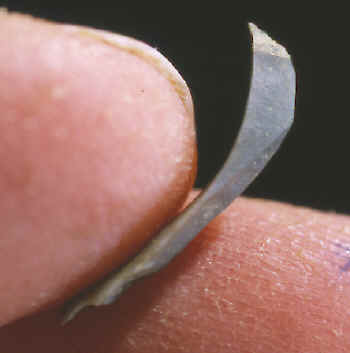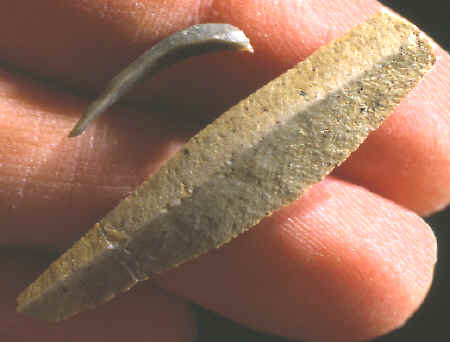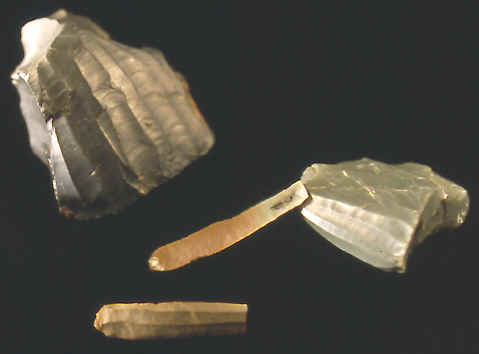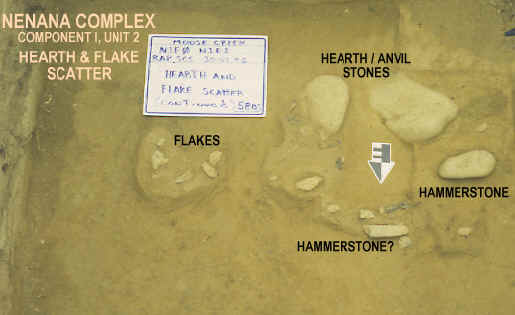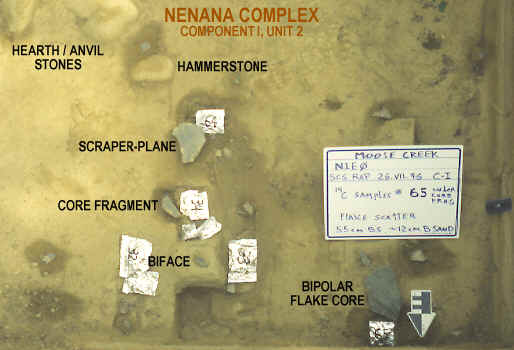|
|
|
The third deepest occupation level is represented as a Denali complex belonging to the paleoarctic tradition. It is designated here as Denali complex I and is located within geological unit number 2, just above the Nenana complex. The most diagnostic artifacts found here were 27 microblades made from a single piece of blue chert and a Donnelly burin. All the microblades were found in a tight cluster. |
|
|
|
|
Other artifacts found in Denali complex I include several complete and fragmented bifaces, a blade and lanceolate projectile point tips and bases. These projectile points have diamond shaped cross-sections, heavily ground bases and straight or flat proximal ends (bases). Several flakes and an exhausted core made of gray-white rhyolite were found next to a hearth containing fire cracked rock and a large amount of charcoal. Charcoal collected from this hearth produced a date of 10,500 + 60 BP. |
|
|
|
|
The oldest archaeological feature represented at Moose Creek is a Nenana complex occupation. It is located in component I deep within the geological strata in unit 2 and just above the glacier deposited outwash gravels. The Nenana deposits were as much as 70 cm (27.5 inches) deep and approximately 5 cm (2 inches) above the outwash gravels. |
|
|
One of the most important discoveries made in the Nenana occupation level was a hearth that provided enough wood charcoal to date the occupation directly. The several chunks and pieces of charcoal was identified as willow (Salix app.). The soil (loess) surrounding the charcoal was also reddened and slightly hardened. A date of 11,190 + 60 years before present was measured from a piece of charcoal taken directly next to the scraper plane found by the hearth. |
|
| CONTINUE ON TO PAGE FIVE | |
|
"REFERENCES"
1991,
"Clovis Origins and Adaptations," "The Nenana Complex of
Alaska and Clovis Origins," by Ted Goebel, Roger Powers and Nancy
Bigelow, pp 49-76. |
|
